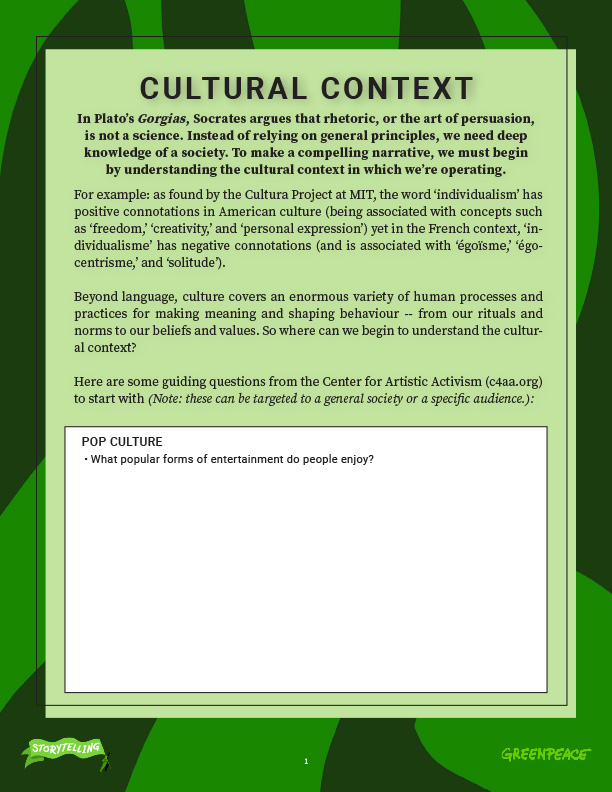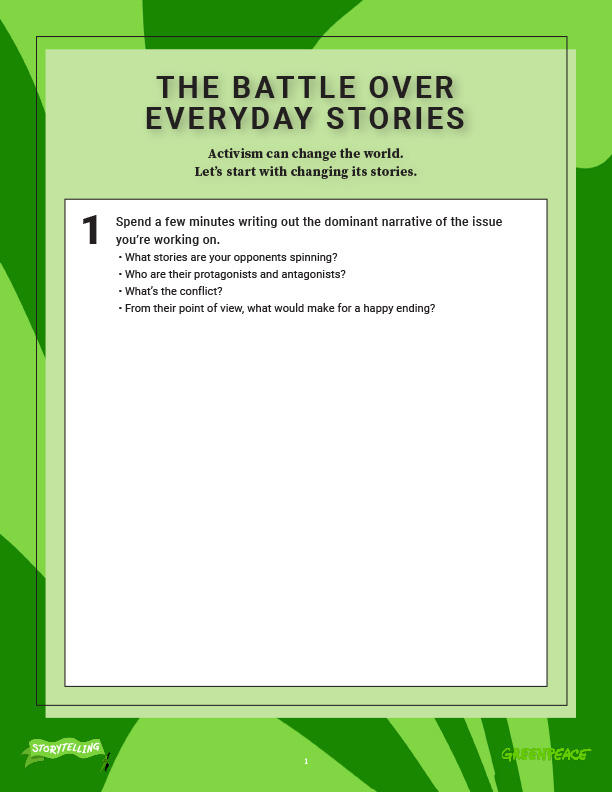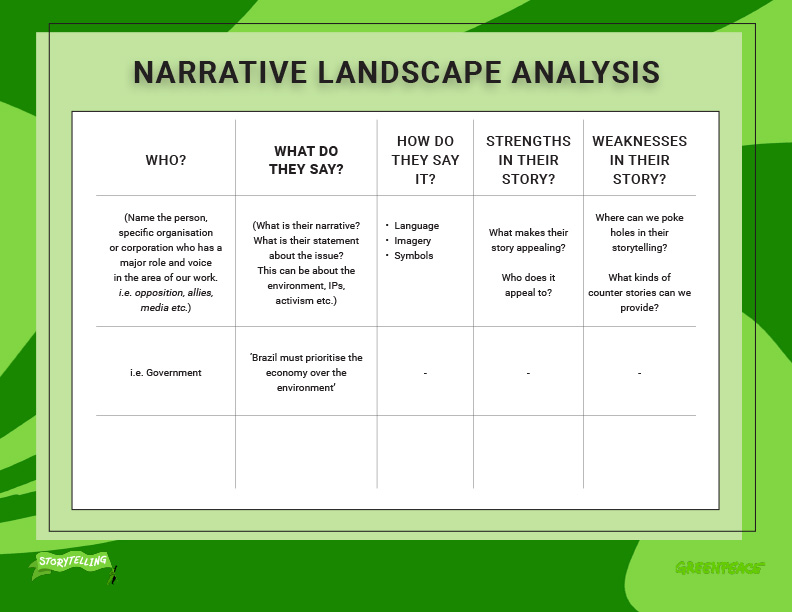STEP TWO: KNOW YOUR LANDSCAPE
Every story is part of a larger narrative ecosystem. Good storytellers are mindful of how their stories interact with those already in circulation.
METANARRATIVES

A culture’s “common sense” is rooted in its common stories. We must understand the big narratives that shape our world.
A metanarrative is the blueprint for a society or culture. It provides the big ideas that organise our world. Often these are stories that everyone believes are true or just “common sense.” Growth is good. Progress is linear. You get what you deserve. Because meta narratives seep into the many smaller stories of our lives, we don’t even recognize them as stories. That’s why meta narratives are often invisible.
Metanarratives can be political or economic ideologies — democracy, capitalism, socialism. They can be assumptions about how the world works — humans have the right to use and exploit nature, for example, or that if you just work hard enough, you’ll get the rewards you deserve.
A good indicator that you’re dealing with a metanarrative is that it presents itself as a self-evident truth, not just one opinion among many. Of course, profit is always good, it might say, or, Obviously, new technology is superior to traditional ways of doing things.
The thing about metanarratives is that they don’t need to be explicitly evoked to do their work. These stories run so deep that they often shape our actions and worldviews on a subconscious level. This is what makes them so difficult to challenge. Difficult, but not impossible.
What metanarratives are embedded deep into the issues you’re tackling? What meta narratives are gaining power? What meta narratives are breaking apart? Here’s an exercise to analyse the meta narratives at play for you.
DOMINANT NARRATIVES

What stories do we want to challenge, and how do we offer a compelling alternative, one that will ring true to the audiences we want to engage?
Stories are always in conversation. And sometimes those stories will come into conflict. Think of any contentious political issue. Surely, there’s someone—a politician, a corporate spokesperson, even a friend or family member—whose narrative about that issue is directly opposed to your own.
It can be helpful to place these conflicting narratives into two different categories. A dominant narrative is a story that serves the interests and ideologies of a dominant social group (not necessarily the majority social group, but the group with power over the issues you’re interested in tackling). In the work that we do, these will usually be the narratives of our opponents. For example, a dominant narrative might insist that environmental regulations will hurt economic growth.
We want to fully understand the dominant narratives at play in our issue. Here is an exercise to analyse the landscape of dominant narratives.
COUNTER NARRATIVES

Counter-narratives, by contrast, are stories that can challenge and even weaken the dominant narrative. They draw on different frames, offer different explanations and prioritise different values. When faced with a dominant narrative that you think is broken or misleading, you have the opportunity to craft a compelling counter-narrative to win over your audience. Ideally, it should be both honest and hopeful. To counter the example above, you might say that sensible environmental regulation will help build safe, healthy communities where our children can grow and their children after that.
This exercise will help you to think through the dominant narratives you’re up against, and to consider what powerful counternarratives you can offer in response.



